|
||||
|
||||
|
|
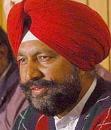 Secretary General: Balbir Singh Sandhu 5.1980 > |
|
||||
|
||||
 N.1, P.UNL 5 Dollars ND(1980's) CL1 |
 Back |
|||
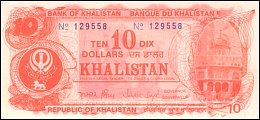 N.3, P.UNL 10 Dollars ND(1980's) |
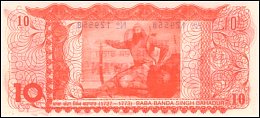 Back |
|||
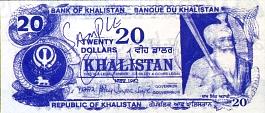 N.5, P.UNL 20 Dollars 1982 |
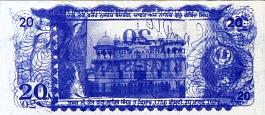 Back |
|||
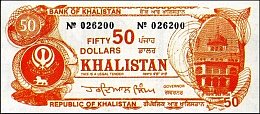 N.7, P.UNL 50 Dollars ND(1980's) |
 Back |
|||
|
||||
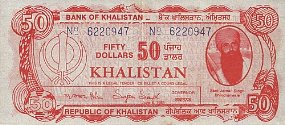 N.9, P.UNL 50 Dollars ND(2001?) |
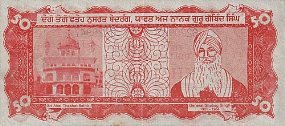 Back |
|||
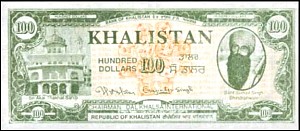 N.11, P.UNL 100 Dollars ND(2001?) |
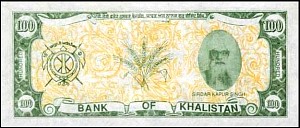 Back |
|||
|
Khalistan issues
are not official banknotes. The 5 and 10 Dollars were donation receipts. The
other notes were apparently printed as possible currency and later used for
promotion purposes. On April 12, 1980, Jagjit Singh Chauhan, a prominent supporter of the
movement, met with Indira Gandhi. After the meeting, he declared that he had
formed the National Council Of Khalistan, at Anandpur Sahib. He said he
was the President of this movement, and Balbir Singh Sandhu was its Secretary
General. In May 1980, Chauhan travelled to London and announced the formation of
Khalistan. A similar announcement was made by Sandhu, in
Amritsar.
Sandhu also released stamps and currency of Khalistan. Some people said, the
Indian authorities in Amritsar and elsewhere should not have been inactive and
that this was a planned political move by the Indian National Congress. The Constitution of India says it is forbidden to make new states which are
independent of India. This is known as "secession". Different groups in favor of
Khalistan fought an insurgency against the government of India. Indian security
forces suppressed this insurgency in the early 1990s. Since then, little has
been done inside Punjab to get a Sikh state, but certain organisations in favor
of Khalistan, such as Dal Khalsa (International) are still active outside
India Source: Wikipedia |
|
CL1 We gratefully acknowledge collector CL1 for these images. |
![]()